Surgery & Pain Relief Innovative Ways to Use Patient Boards
After surgery, managing postoperative pain is essential, not just for comfort but for effective recovery. Imagine trying to heal when every movement or breath is a constant reminder of the procedure. Proper pain relief and pain control improve the quality of life and speed up recovery, reducing risks like chronic pain or delayed healing. For healthcare professionals, ensuring effective pain control leads to quicker recovery and greater patient satisfaction.
omLet’s explore the different types of post-operative pain and delve into how effective strategies can relieve pain, even when dealing with severe pain scenarios. We’ll examine the innovative role of patient boards in postoperative pain management and discuss best practices in personalizing pain management approaches. Along the way, we’ll highlight the benefits of healthcare whiteboards in this process. Whether you’re a caregiver, nurse, or healthcare professional, there’s valuable insight ahead to enhance your approach to managing patient pain effectively.
Understanding Post-Operative Pain
Types of Post-Operative Pain
Post-operative pain isn’t one-size-fits-all. It varies depending on the surgery and the individual. There are three broad types to consider:
- Acute Pain: This is the most common post-surgery pain. It’s sharp and immediate but usually decreases as the body heals. Think of acute postoperative pain as the body’s alarm system, signaling that it needs care.
- Chronic Pain: If pain persists beyond the normal healing period mild to moderate pain, it may develop into chronic pain. This can occur due to complications or specific conditions that weren’t resolved during surgery.
- Neuropathic Pain: This pain results from nerve damage and can be a tricky customer to manage. It’s often described as burning or shooting pain and may require specialized treatment.
Factors Influencing Post-Operative Pain
Several factors influence the intensity and type of post-operative pain a patient might experience:
- Health Status: Pre-existing conditions can alter pain perception. A patient with diabetes, for instance, may experience more intense or prolonged pain.
- Surgical Procedure: The type and duration of surgery play a significant role. More invasive surgeries tend to result in more intense pain.
- Psychological Factors: Stress, anxiety, and depression can heighten pain perception. Patients with high anxiety might feel more pain than those who are relaxed and reassured.
Understanding these factors allows healthcare professionals to tailor pain management strategies effectively, ensuring better outcomes for patients.
The Role of Patient Boards in Pain Management
What are Patient Dry Erase Boards?
Patient boards are visual tools that aid in pain management. They display vital information about a patient’s pain management plan, including medication schedules, pain scale assessments, and non-drug relief options. By providing this information clearly, they empower patients to take an active role in managing their pain.
How Patient Boards Improve Pain Management
Take this example from a knee surgery recovery. A patient board might include a pain scale, allowing the patient to communicate their pain level effectively. This helps ensure timely and appropriate medication administration, enhancing the patient’s overall experience.
Empowering Patients Through Pain Control Information
When patients understand their pain management plans, they’re better equipped to follow them. Patient boards act as a constant reminder and motivator, reducing anxiety around when the next dose is due or what non-drug relief strategies are available.
As an example, the board could list the timing for pain medications, providing a clear schedule for when the next dose is due. This helps both patients and healthcare providers manage and control the pain perceived after surgery, ensuring that pain medicines are administered effectively to maintain comfort.
Best Practices for Implementing Patient Boards
Training and Education
Proper implementation of patient boards requires comprehensive staff training. Healthcare providers need to explain the purpose and usage of these boards to patients and their families. This builds trust and encourages active participation in pain management.
Incorporating Boards into Care Plans
Patient boards should be seamlessly integrated into a patient’s care plan. Regular updates and evaluations ensure they remain relevant and effective. For example, if a patient’s pain threshold changes for tolerance of control pain levels, the board should reflect this new information.
Evaluating Outcomes and Making Adjustments
Assessing the impact of patient boards on outcomes allows healthcare professionals to make necessary adjustments in care for pain after surgery. Regular feedback from patients and staff can guide these improvements, maximizing the effectiveness of patient boards to manage pain.

Personalizing Pain Management for Better Outcomes
Tailoring Plans to Individual Needs
Personalized pain management means taking into account each patient’s medical history, pain tolerance, and personal preferences. This approach ensures treatment plans are more effective and acceptable to patients surgical pain.
Collaboration with Patients and Caregivers
Involving patients and their caregivers in planning fosters a collaborative approach. This partnership can lead to more personalized strategies that align with a patient’s lifestyle and expectations, ensuring better adherence the pain control plan and outcomes.
Types of Healthcare Whiteboards and Their Purposes
Admission Whiteboards
These boards are the first point of contact for patients entering surgery. They provide essential information most patients ask like the room number, and attending physician. This ensures everyone is on the same page from the start, reducing confusion and errors.
Pre-Operative Whiteboards
Before surgery, these boards help organize the preparation process. They include surgical schedules and specific pre-op instructions, ensuring all steps are followed accurately. This streamlines the process and enhances patient safety.
Intra-Operative Whiteboards
During surgery, intra-operative boards play a crucial role in maintaining communication among surgical teams. These boards include count boards and timeout boards, each serving specific purposes.
Count boards are used to track surgical instruments and sponges, ensuring that all items are accounted for before, during, and after the procedure, thereby preventing any retained items in the patient.
Timeout boards, on the other hand, are essential for conducting safety checks. They display surgical plans and updates, facilitating a moment of pause for the team to confirm patient identity, surgical site, and procedure, ensuring that everyone is on the same page.
Together, these boards help facilitate smooth transitions and coordination, which are crucial for conducting efficient and safe surgeries.
Post-Operative Whiteboards
After major surgery, managing postoperative pain effectively is crucial for a smooth recovery. Custom patient boards play an essential role in outlining detailed pain management and recovery plans. From the moment pain begins, these boards ensure that patients receive the necessary guidance on how to treat pain appropriately.Enhancing Communication and Care Coordination
Pain medication is often a significant component of these plans. By clearly displaying information about prescribed medications, including dosages and schedules, the boards help patients and families understand when and how to take these medications. This understanding is vital for managing pain effectively and preventing any potential issues related to under or overmedication.
Moreover, these boards serve as a communication tool between healthcare providers, patients, and families, promoting active participation in the recovery process. By keeping everyone informed, they help set clear expectations, ensuring that everyone involved knows what to expect and when. This transparency not only supports the medical team in treating pain but also empowers patients and their families to take an active role in the healing journey.
Benefits to Healthcare Providers
Whiteboards greatly enhance workflow efficiency. They reduce the likelihood of errors and support teamwork across disciplines, ensuring everyone is aligned with the care plan.
Benefits to Patients Perceived Pain Relief
Patients benefit from improved transparency. When they can see and understand their care plan, they’re more engaged and satisfied with their care. This transparency leads to greater patient satisfaction.
In Use Examples
- Pre-Operative Phase: A patient preparing for heart surgery might receive a list of medications to avoid and dietary guidelines to follow, ensuring they are ready for the procedure.
- Intra-Operative Phase: The surgical team might use a board listing the sequence of the procedure and necessary equipment, keeping everyone focused and efficient.
- Post-Operative Phase: A board displaying medication times and therapy sessions helps both patients and care teams track recovery.
Contributions to Improved Patient Outcomes and Satisfaction
Streamlining Hospital Operations
Whiteboards streamline operations by providing a central hub for information. This ensures that all team members are informed and can work together effectively.
Empowering Patients for Quicker Recoveries
By facilitating communication and coordination, whiteboards empower patients to take an active role in their recovery. This engagement leads to quicker recoveries and more positive experiences.
Enhancing Satisfaction Through Communication
Clear communication through whiteboards means patients are informed and involved. This understanding leads to increased satisfaction and trust in their healthcare providers.

Key Strategies in Post-Operative Pain Management and Professional Development
Effective post-operative pain management is essential for patient comfort and recovery. Key strategies include understanding the types of pain, leveraging patient boards for communication, and personalizing pain management plans. Healthcare professionals and caregivers are encouraged to adopt these practices to improve outcomes. As pain management evolves, ongoing education and adaptation will be crucial in providing the best care possible.
For further exploration, consider engaging with professional development resources or workshops on innovative pain management techniques. By staying informed and adaptable, healthcare professionals can continue to provide high-quality, patient-centered care.
Comment (1)
Comments are closed.



Essential Pain Rating Scales Every Healthcare Professional Should Consider | VisiCare
March 20, 2025[…] example, a patient experiencing post-operative pain might rate their discomfort by marking a spot closer to the ‘worst pain’ end, offering […]